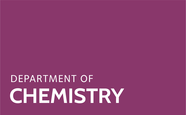Molecular dynamics simulations are used to probe the properties of non-native states of the protein human alpha-lactalbumin (human alpha-LA) with a detailed atomistic model in an implicit aqueous solvent environment. To sample the conformational space, a biasing force is introduced that increases the radius of gyration relative to the native state and generates a large number of low-energy conformers that differ in terms of their root-mean-square deviation, for a given radius of gyration. The resulting structures are relaxed by unbiased simulations and used as models of the molten globule and partly denatured states of human alpha-LA, based on measured radii of gyration obtained from nuclear magnetic resonance experiments. The ensembles of structures agree in their overall properties with experimental data available for the human alpha-LA molten globule and its more denatured states. In particular, the simulation results show that the native-like fold of the alpha-domain is preserved in the molten globule. Further, a considerable proportion of the antiparallel beta-strand in the beta-domain are present. This indicates that the lack of hydrogen exchange protection found experimentally for the beta-domain is due to rearrangement of the beta-sheet involving transient populations of non-native beta-structures. The simulations also provide details concerning the ensemble of structures that contribute as the molten globule unfolds and shows, in accord with experimental data, that unfolding is not cooperative; i.e. the various structural elements do not unfold simultaneously.
Binding Sites
,Computer Simulation
,Crystallography, X-Ray
,Humans
,Lactalbumin
,Models, Molecular
,Protein Denaturation
,Protein Folding
,Protein Structure, Secondary
,Protein Structure, Tertiary
,Thermodynamics
,Urea




